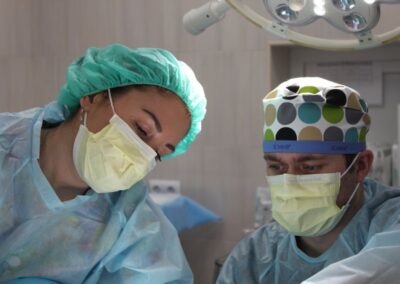The Solution to Patient or Referral “Leakage” Lies in Empowering Primary Care
Increasingly, the primary care physician is tasked with the challenge of better utilizing services and specialists currently in their own medical group or network. Reasons to internalize care include the implementation of capitation or other risk products, payor-imposed narrower networks, and the need to maximally utilize physicians in one’s own medical group for practice growth and stability. Historical referral patterns nurtured over the years by primary care physicians are now called to question, and avoiding patient leakage is crucial.
The leakage problem can be further exacerbated by the patient who, with the increase in restrictive or high-deductible health plans, may now have to pay more for out-of-network services. Primary care physicians, already overworked, are at the forefront of this issue, and often bear the brunt of the frustrations.
There are multiple strategies to address this “steerage” or “keepage” (also called reducing the “leakage”), and in this blog I’ll review some of the most promising angles.
How Does Patient Leakage Occur?
Etiologies of “leakage” frequently encountered in day-to-day practice, and their resultant opportunities include:
- The patient requests to see an out-of-network specialist – Is an appropriate specialist available in network? Proper reassurance and education by the primary care physician is essential. Additionally, the patient must be made aware of the potential financial consequences of seeking care out of network.
- The primary care physician prefers the out-of-network specialist – In this case, one must examine why the physician prefers that outside specialist. Is it an issue of quality or of personal comfort? Can the physician develop new relationships with specialists that are in network? One-on-one discussions may be necessary to vet this out.
- The specialty service is unavailable in the network – The payor or medical group must consider a “make or buy” option. Depending on the situation, it may be more beneficial to lose those out-of-network services than to recruit and hire a physician (or physicians) to cover that specialty. The appropriate strategic direction is determined on an individual market/specialty basis.
- Services are available in network, but not in a timely fashion – There is an opportunity for the group management to assist the specialist by exploring options to see the patient more quickly or developing strategies of immediate care management until the time of appointment. If the lack of accessibility is due to more general practice efficiency issues, it could result in the group losing more patients than just the one in question. The group now can improve the workflow for the entire benefit of the entire medical group.
- The medical event occurs out-of-area – Often managing the initial referral is unavoidable as the patient may be on vacation or out of town when the acute event occurs. Here, the role of case management and patient communication is critical with the goal of getting the patient back into the service area as soon as is medically feasible.
Additional Ways to Minimize Referral Leakage
Various permutations of the above strategies are already in place to manage the reduction of patient and referral “leakage” by payors and medical groups. I would like to propose two other areas that can help prevent patient leakage while also improving outcomes, improving patient experience, and enhancing the practice of primary care and specialty care.
Maximizing the initial work-up by the primary care physician prior to specialty referral
This is an opportunity for primary care to initiate the appropriate specialty work-up in advance of the specialty referral.
The primary care physicians’ group should meet with the key specialists and develop a care plan for the initial work-up of the 2–3 most common diseases associated with that specialty. The primary care physician can utilize these diagnostic/treatment plans as an initial workup of the patient. The specialty referral would only proceed if further management or treatment is indicated based on the initial work-up. The primary care physician could tell the patient that “I have already consulted the specialist, and this is what he/she would do initially, and we are starting that work-up today in my office.”
Implementing this process successfully could result in the increase of the specialist’s procedure rate from primary care referrals (which most specialists would prefer) as the patient has been optimally triaged and assessed prior to referral. Often, the etiology of the patient’s symptoms can be more efficiently determined in the primary care office, and the patient will receive the appropriate care faster without the need for further evaluation. Ongoing communication between the primary care physician and the specialist is essential in keeping the evaluations current.
Internalizing specialty procedures into primary care
There is an opportunity for networks and medical groups to determine the key specialty procedures that could be performed with proper education and training in a primary care practice.
This does not mean that every physician needs to learn every procedure. Often within the medical group or network, there are individual primary care physicians that like to do those procedures, and the group can funnel patients to those physicians. When done appropriately, it gives the primary care physician the opportunity to “mini-specialize” in clinical areas of specific interest to that physician. It allows the primary care group to function more like a group and care for their patients more expediently within their present structure.
Enhancing Primary Care for Its Own Sake
Even if these two enhancements to primary care do not contribute to the goal of reducing out-of-network “leakage,” it would provide a process of care that could be more appealing to the patient, the primary care physician, and the specialist.
The need to keep patients in a predetermined network will be more important for both payors and medical groups in the future as managed care, Medicare Advantage, and risk contracts increase and as the need for medical group practice optimizations continue.
In addition to the usual strategies, the consideration of these enhancements to primary care may be an excellent way to improve care outcomes and quality, improve timeliness of care, and even improve physician practice satisfaction.
As always, I welcome your thoughts and feedback. If you’d like further consultation for your medical group, reach out to me to learn more.




